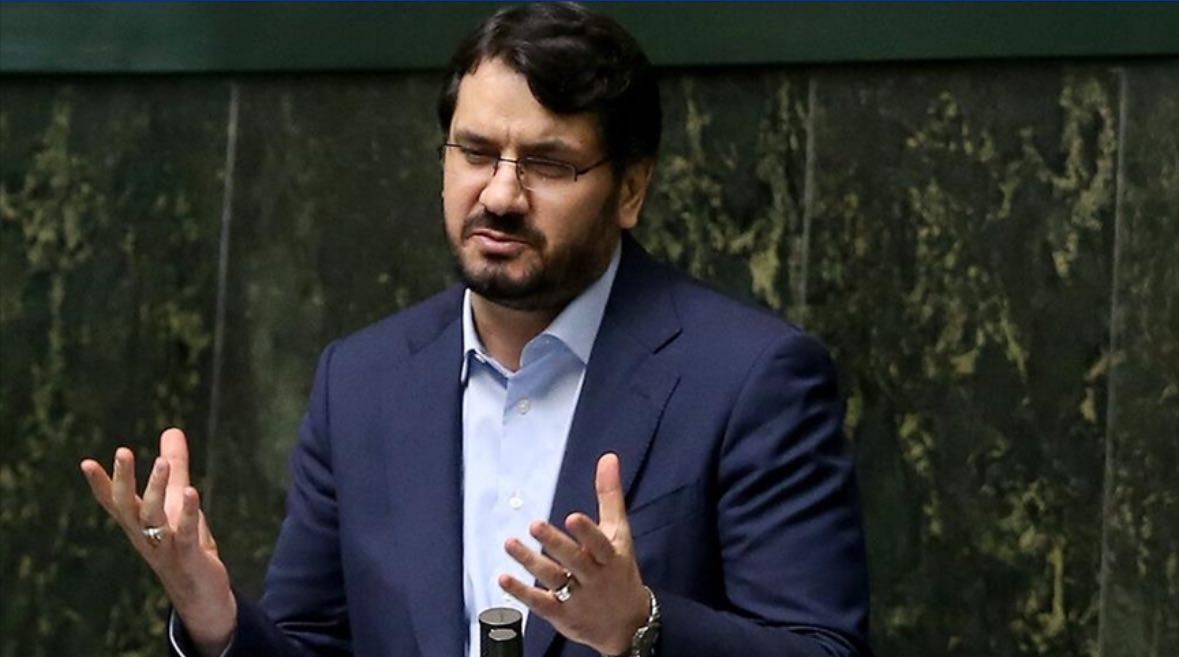Mehrdad Bazrpash’s Big Dreams
It has been over a year since Mehrdad Bazrpash became the Minister of Roads and Urban Development in the thirteenth government. A look at Bazrpash’s performance during his tenure as minister indicates his extremely poor performance in one of the most important ministries of the Ibrahim Raisi government. This ministry was supposed to fulfill Raisi’s most important and fundamental election promise, which was to build 4 million housing units. However, despite more than two and a half years passing, this promise is still unclear.
Mehrdad Bazrpash became the head of the Ministry of Roads and Urban Development in Azar 1401 (November-December 2022). He replaced Rostam Qasemi, who, after a controversial period and an illness that led to the death of this veteran manager of the Islamic Republic, was replaced. However, a review of Bazrpash’s one-year performance indicates his incompetence as well as political maneuvering and factionalism in one of the most specialized ministries of the government.
Bazrpash’s performance as the Minister of Roads and Urban Development can be examined in three areas: first, fulfilling the promise of building 4 million housing units; second, unprecedented jumps in housing prices and the upward trend of inflation in the housing market; and third, factionalism and systematic maneuvering within the Ministry of Roads and Urban Development. This report examines all three areas.
Fantasy Seeder
In a situation where Ibrahim Raisi took office as the president of the thirteenth government, he had promised to build 4 million housing units during his first term as the president. Therefore, many expected Raisi to at least introduce a non-political and specialized candidate as the Minister of Roads and Urban Development to the eleventh parliament. However, amidst astonished and concerned looks from the public and the media, Raisi appointed the controversial Minister of Oil, Mahmoud Ahmadinejad, to take charge of the Ministry of Roads and Urban Development, which was quite unexpected.
If we ignore the controversies surrounding the vote of confidence session, Qassemi’s performance during his more than one-year tenure as the minister not only had many political controversies, but also with his death in the autumn of 1401, the case of the efforts to fulfill the promise of building 4 million housing units completely closed.
Mehrdad BazarPash became the replacement for Rostam Qassemi, whose efforts as the Minister of Roads and Urban Development to secure the required land for the implementation of the National Housing Initiative had failed. Qassemi had complained about the governmental and ruling institutions’ failure to achieve even a 4% land acquisition for the housing plan. With these circumstances, everyone expected BazarPash to at least make an effort, even if it was just in appearance, to implement the National Housing Initiative.
But the amazing thing is that not only did he not make such an effort, but he poured cold water on everyone’s hands and said that it is not possible for the government to implement such a plan. In fact, it seems that Raeesi had replaced Rostam Qasemi so that he could determine the fate of Raeesi’s dreams with the same frankness and audacity as Ahmadinejad’s spiritual son.
Of course, in the following months, Bazarpaash, Raeesi, and even Mohammad Mokhber would blame the banking system for the failure to implement this plan in a way that Bazarpaash repeatedly talked about the need to increase housing facilities up to one billion tomans by using the keyword, and criticized the banks for not cooperating in the direction of building 4 million housing units.
Furthermore, the Ministry of Roads and Urban Development, under the management of Bazarpaash, took the lead in presenting a new narrative of Ibrahim Raeesi’s promises in the 1400 elections. The Minister of Roads and Urban Development and some other government officials claimed that Raeesi did not promise to build 4 million housing units, but rather promised to support the people in building this number of housing units in four years.
Although this revolutionary government strategy was not completely unknown and unfamiliar, it could not address the construction of 4 million housing units as predicted. Immediately after the expression of such a claim by the seeders, Iranian users on social networks began to share videos of the 1400 election debates, in which Ebrahim Raisi made promises of building 4 million housing units by his government.
Ultimately, after more than a year of the Seeder’s work in the Ministry of Housing, it seems that the case of building 4 million housing units has been closed. Therefore, it can be said that he has failed to fulfill the most important promise made by Raisi, which was evident to everyone, and there is no clear prospect for its implementation.
The Seeder Surprise
One of the most important tasks of the Ministry of Roads and Urban Development in the field of housing management in the country is to strive to control housing inflation in the market. Because, considering the tools available to the government, the Ministry of Roads and Urban Development has the ability to maneuver extensively as one of the influential players in this field. For example, Mehr Housing covers a significant portion of the housing market. Therefore, not only completing and delivering semi-finished phases of Mehr Housing, but also making effective efforts to stabilize inflation in the housing market could be done.
What did the Minister of Roads and Urban Development, appointed by President Raisi, do? Immediately after taking office, he halted all cooperation with the Central Bank in providing and publishing housing inflation rates. Even the Central Bank and the Statistical Center were prohibited from publishing and calculating housing inflation rates. This situation lasted for more than 8 months, and for the first time in 30 years, there was no available data on the housing market.
Meanwhile, various media outlets, such as Donya-ye Eghtesad newspaper and EqoIran website, were reporting record-breaking housing inflation during the Nowruz of 1402. According to these statistics, the point-to-point housing inflation rate had exceeded 120% in many areas of Tehran. However, not only did the Central Bank and the Ministry of Roads not confirm these reports, but they also accused the media of conspiring against the Raisi government.
After 8 months of intense pressure from the media, the Central Bank finally released the alarming statistics on housing market inflation. According to this report, housing inflation in the month of Shahrivar of the current year had surpassed 60%, and the average housing price in Tehran had exceeded 70 million tomans.
Although many residents of Tehran, as well as experts and market activists, have questioned the authenticity of these statistics and figures, even if we accept the Central Bank’s report, the published news indicates a record-breaking housing inflation in contemporary Iran. This means that Mehrdad Bazarpaash not only took action to increase housing supply in the market through the implementation of the National Housing Movement plan, but also achieved an unprecedented record in housing inflation in less than a year.
But the story doesn’t end here, as recently, in the final days of Azar 1402, a report was published announcing the breaking of the record for an 85% housing inflation in the capital market. It should be noted that Bazarpaash took charge of this ministry under challenging circumstances, with inflation rates fluctuating between 45% to 50%, but now, in just about a year, the average housing price in Tehran has surpassed 80 million tomans, and the housing inflation rate has risen to over 85%.
Mehrdad’s position
From the very beginning of his tenure at the ministry, the seed sower, following the pattern of other members of the Ibrahim Raisi government, included political and factional approaches in his agenda. He, who is known as the spiritual son of Mahmoud Ahmadinejad, immediately began purging specialized personnel and middle managers of the Ministry of Roads and Urban Development, replacing them with inexperienced and politically aligned individuals.
But it didn’t stop there. The seed sower, in a strange and unprecedented manner, engaged in explicit political activities, channeling them through a party called the Strategic Network of Supporters of the Islamic Revolution, which was established by his close associates in February of last year. Although the central council members of the Strategic Network denied any connection between the seed sower and this extremist movement, experts believe that the Strategic Network party is the same failed experiment of the seed sower from 17 years ago, which had the pretense of creating a broad organization but ultimately ended in failure.
Many newly appointed managers in the Ministry of Roads have unbelievably participated in the party ceremonies, spinning the wheel around Mehrdad Bazrpash. However, amidst the astonished looks of the media, for the first time, a minister who is still seated at his desk has fully participated in the announcement ceremony of a political party’s existence.
Mehrdad Bazrpash officially joined the ranks of the arteries and celebrated the controversial and superintended branching off from the Stability Front party. Many analysts believe that Bazrpash is actually one of the main pillars of the purification project in the government of Ebrahim Raisi. Therefore, by forming the artery, he intends to allocate a considerable share in the twelfth parliament to his supporters, in order to have a stronger position in the power hierarchy.
Persian
مشاهده این مقاله به زبان فارسی


